Contemplation and the art of tokonoma
and a recipe for corn kakaige (Japanese corn fritters)
To everyone new here, welcome. I’m Elizabeth, the writer of Delicious Bits, a weekly dispatch for the curious, blending discovery, reflection, and musings, always wrapped up with a seasonal recipe worth lingering over.
I was always the messy little sister.
In our modest home, my middle sister and I shared a small bedroom, twin beds with matching pink chenille bedspreads, a dresser with side-by-side drawers for our clothing, a single closet.
There was no mistaking which side was hers, which was mine. My things scattered on the dresser, the bed a disarray of sheets and pillows; her domain always tidy, the bed made with a military precision that reflected of my father’s fussy attention to detail, the clothes folded and put away just so.
And no matter how much my mother implored me to “be like your sister,” I resisted the call to order. It was my little rebellion, the sense that being neat and tidy took the interesting edges off things. Yet still, in the turmoil of my scattered possessions and ideas and dreams, there was always beneath the surface a yearning for calm, for tranquillity…the secret Alladin’s cave I could escape to in my mind with all my treasures arranged exactly to my liking.
Coming into our own
As we grow older and spend our own hard-earned money, the value of our possessions becomes sharper, tied not just to their cost but to the choosing that made them ours.
And so our homes become a reflection of our accumulation and what brings us joy. Our belongings form the nucleus of what gives a place its own energy—an energy that not only feeds and sustains us, but imparts its invisible aura on those who come into our space.
to·ko·no·ma
/ˌtōkəˈnōmə/
noun
plural noun: tokonomas
(in a Japanese house) a recess or alcove, typically a few inches above floor level, for displaying flowers, pictures, and ornaments.
Have you heard of tokonoma? It’s a word and a practice that I only learned about last week.
I first discovered the quiet beauty of a tokonoma through an Instagram post by artist Marie Lenclos, and immediately connected with the idea of creating beautiful moments and vignettes for reflection and pause.
In her post, Marie describes the ritual of creating the tokonoma — a tradition her father, Jean-Philippe Lenclos, tends to as soon as he arrives in Brittany.
"The first thing my dad does when he arrives in Brittany for a holiday is set up his tokonoma…[that] he learnt from living in Japan in the early 60s. The main elements are often some flowers picked in a garden or during a walk, some fruits or pottery, a painting that’s just been made and needs to be assessed. The old wooden work table comes from my maternal grand-father. It’s placed opposite the door to the house, and it’s what you see as you come and go all day."
Marie explains that, in the midst of the noise and chaos of family life, the tokonoma offers a visual moment of calm and harmony.
Marie has lived in London for the past thirty years, and Brittany is where her family gathers and where her father first taught her to paint with oils when she was thirteen. While she continued to paint throughout her life, it was in 2020 that Marie began painting full time.
In London, Marie paints urban landscapes; in Brittany, she returns to the same group of tall pine trees outside her attic studio. You can visit her website and see her marvellous paintings here.
Jean-Philippe Lenclos is not only Marie’s father but also one of the most influential colour designers of his generation. He founded Atelier 3D Couleur in Paris and developed the celebrated concept of Geographie de la couleur, a way of understanding how hues are shaped by place, light, and culture. His work has been exhibited internationally and is held in the permanent collection of the Centre Pompidou.
Since retiring two decades ago, he has painted almost every day—in watercolours, oils, and drawings—always searching, always inspired. He passed on to Marie not only his craft but also an ability to see beauty in the simplest of things.
Seen in this light, Jean-Philippe’s tokonoma practice feels less like a departure from his career than a continuation of it: a another expression of his lifelong sensitivity to colour, form, and place.
These images from the Lenclos family home, gathered over the past ten years, reflect the beauty, simplicity, and inspired harmony born of each tokonoma.
Slow down as you view them. Notice the composition, feel the textures formed by each element, the colours that coalesce everything together. And breathe.
Tokonoma moments
Japan is a beautiful contradiction: a place of modernity, innovation and cutting edge design, built on a foundation of centuries-old traditions of great depth and meaning.
Throughout this, there is a passion for harmony, a deep understanding that to surround ourselves with beauty is to enrich our spirits, refresh our minds and allow us to breathe deeply.
Fresh-cut flowers, cherished books, a tableau of loved objects — all of these things exist in my home. Perhaps what I’ve unconsciously been creating is a series of tokonoma moments: small, micro-sized opportunities to contemplate daily the things that make us whole.
To embrace tokonoma is to embrace a way of seeing the world—with reverence, stillness, and joy.
If you liked this post, let me know by clicking the ❤️ button. It helps spread the word about Delicious Bits and brings me joy. Thank you, dear readers and eaters!
Corn kakaige (Japanese corn fritters)
Makes 8-10 fritters
There is a wonderful Japanese restaurant in Toronto called Imanishi. The restaurant is founded on the concept of Tokyo homestyle cooking, using fresh, umami-rich ingredients to create a contemporary expression of Japanese comfort food.
It was here that we first had corn kaikaige, and it’s the first thing we order every time we go back. I’ve adapted the basic recipe from Hiroko’s Recipes. The sweet pop of corn with the crisp batter, fragrant shiso, and spicy shichimi makes this a beautiful seasonal dish.
2 cups fresh corn kernels (about 2 ears)
½ cup rice flour (or ¼ cup rice flour + ¼ cup all-purpose flour)
½ cup ice-cold water
½ cup ice-cold carbonated water
1 egg yolk (optional)
½ tsp sea salt
Neutral oil, such as canola or sunflower
Sea salt to finish
Optional: purple shiso leaves, finely sliced; shichimi togarashi
In a bowl, whisk egg yolk (if using) with the water and carbonated water.
Sift in flour and salt. Stir very lightly with chopsticks — a few lumps are fine. Keep cold.
Add corn kernels to the batter and toss gently until coated.
For classic tempura: Heat oil in a deep pan to 170–175°C (340–350°F). Drop spoonfuls of batter-coated corn into the oil. Fry 2–3 minutes per side until golden and crisp. Drain on paper towels.
For a lighter pan-fried version: Heat 2–3 tbsp oil in a skillet. Drop in spoonfuls of corn batter, flatten gently, and cook 3–4 minutes per side until golden.
Finish and serve
Place fritters on a plate and sprinkle with sea salt. If desired, garnish with thin ribbons of purple shiso and sprinkle lightly with shichimi togarashi for a touch of heat and colour.
Serve hot.


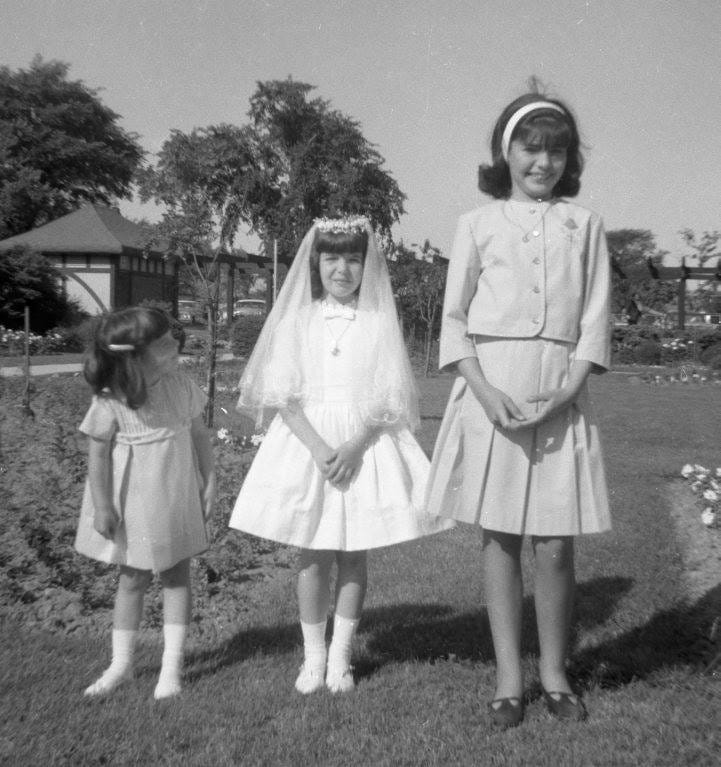
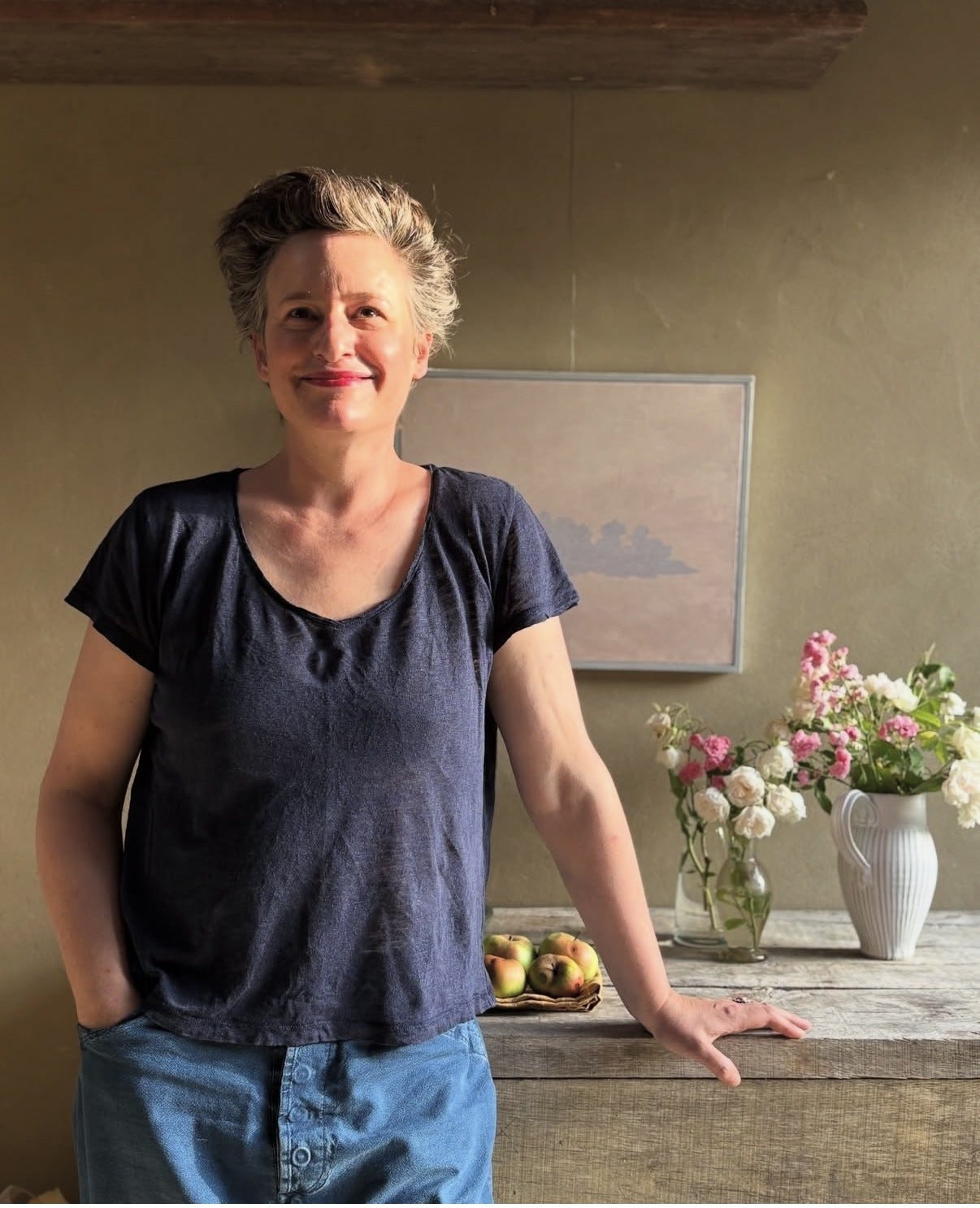
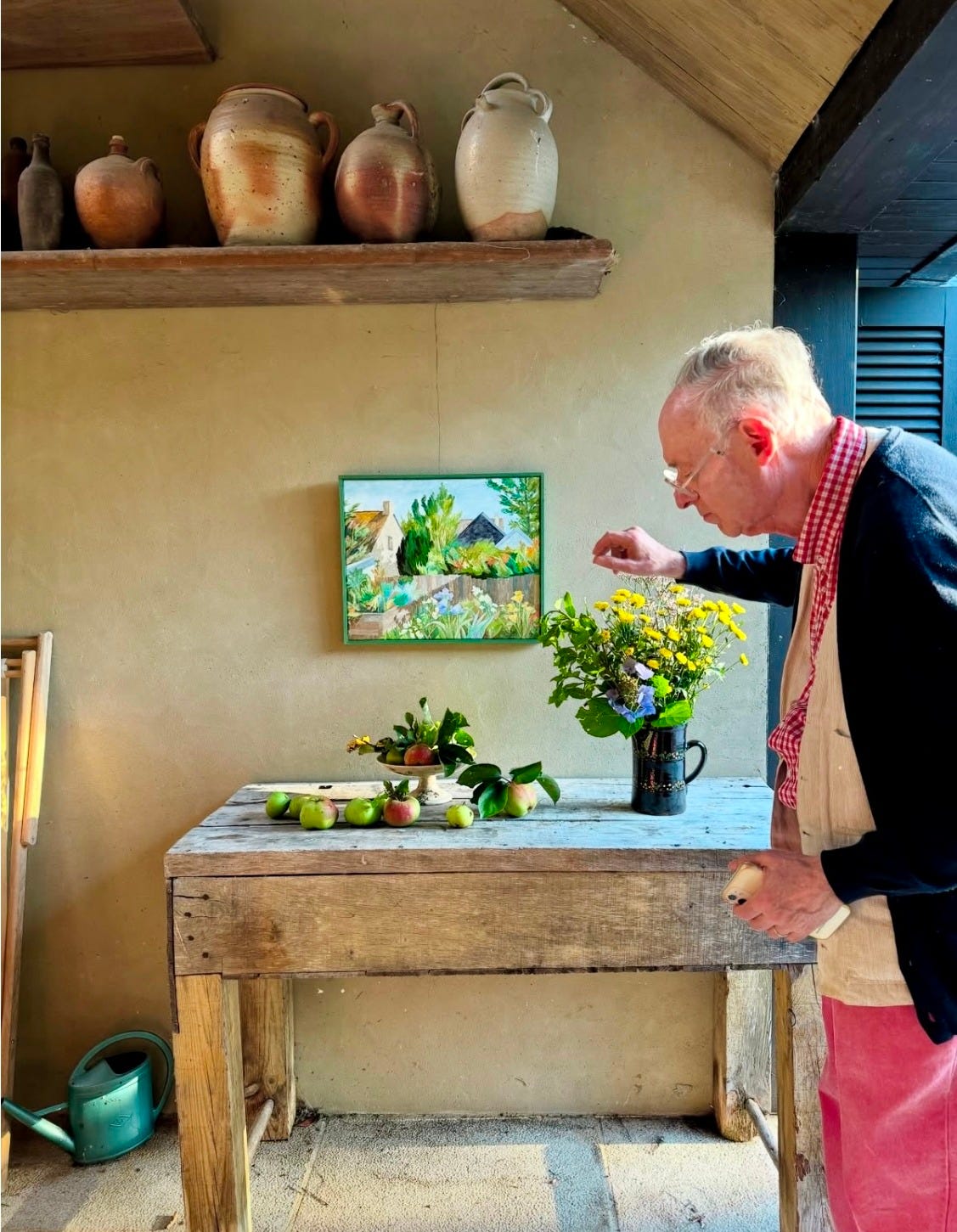
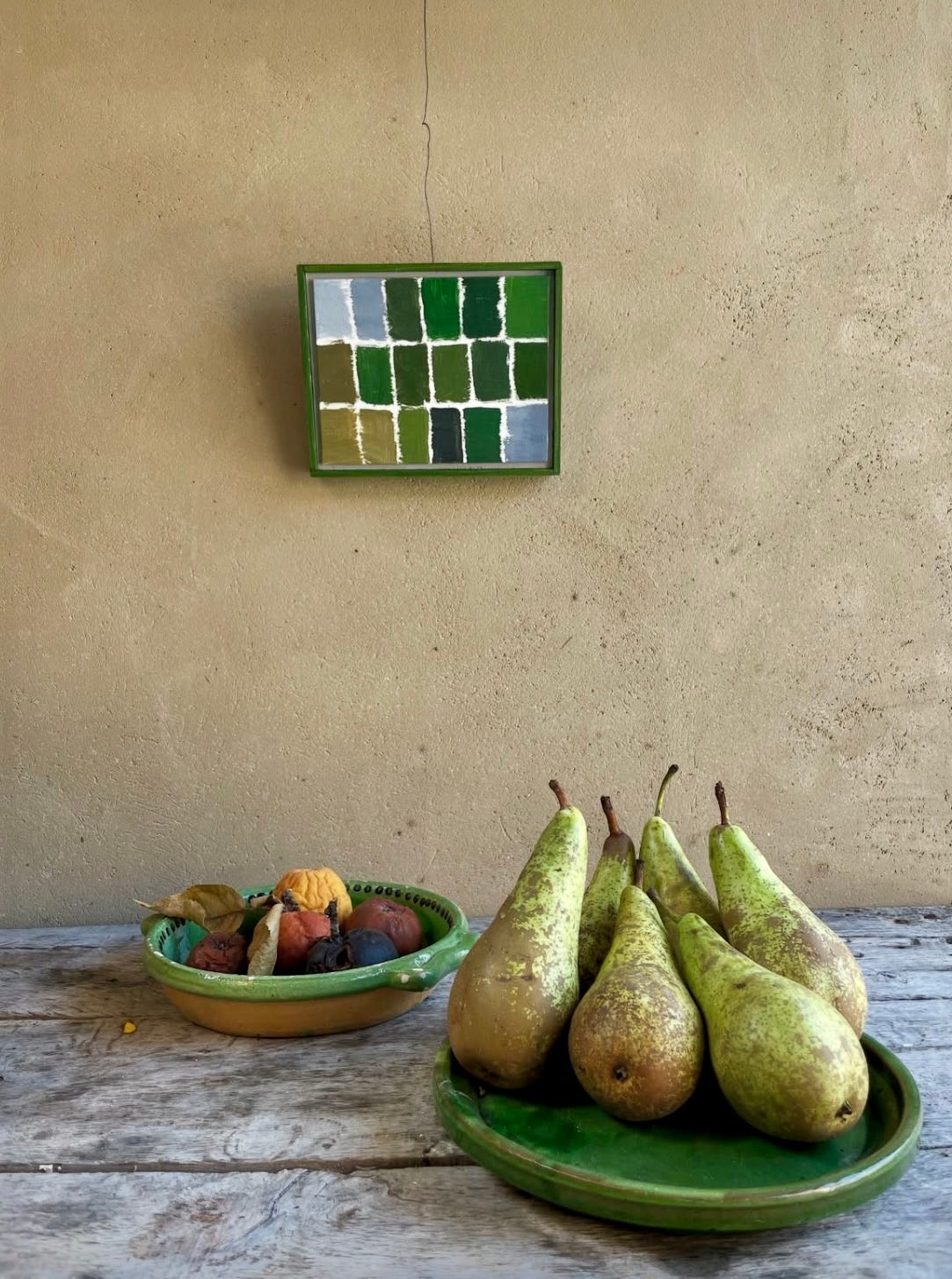
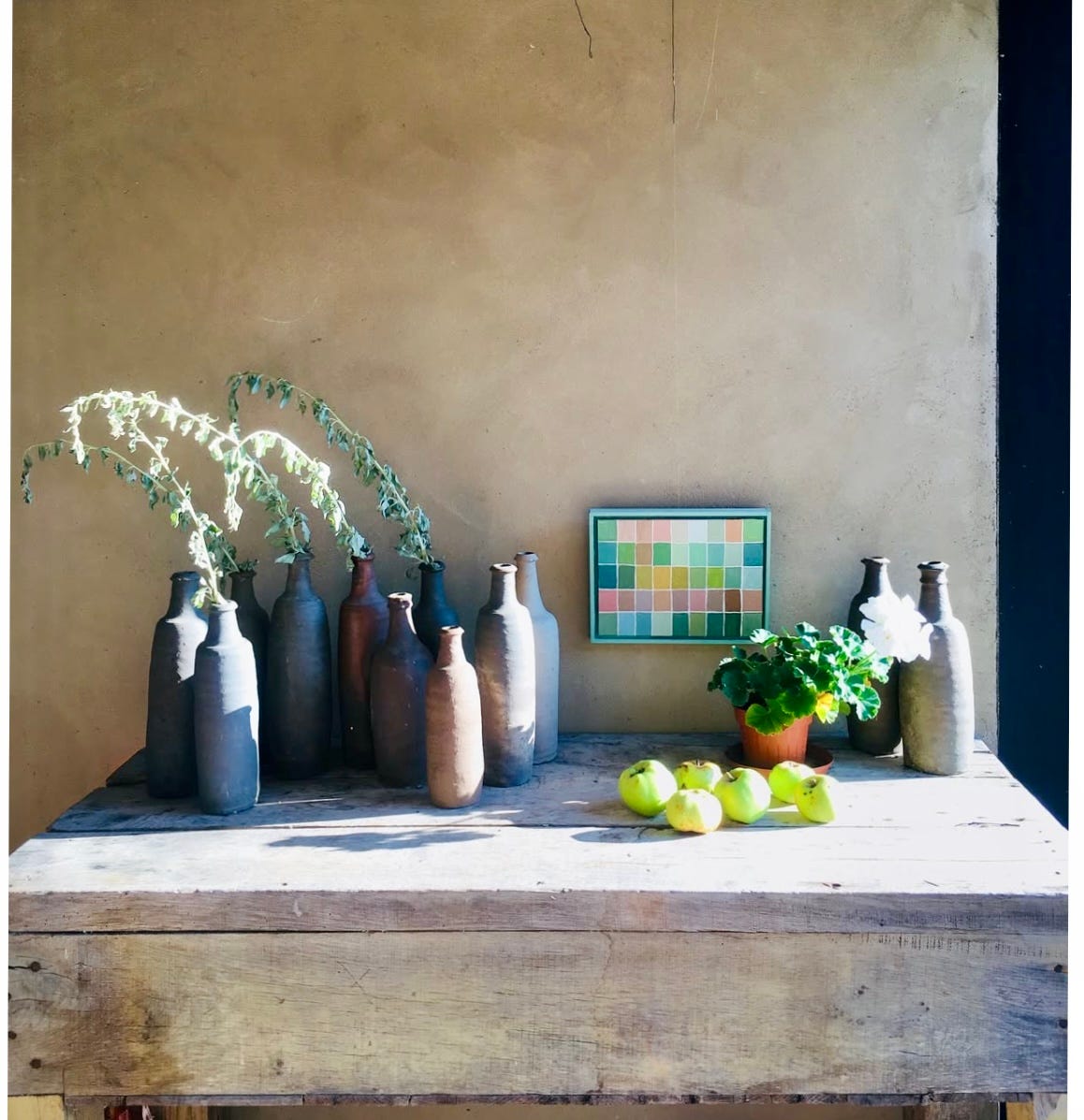
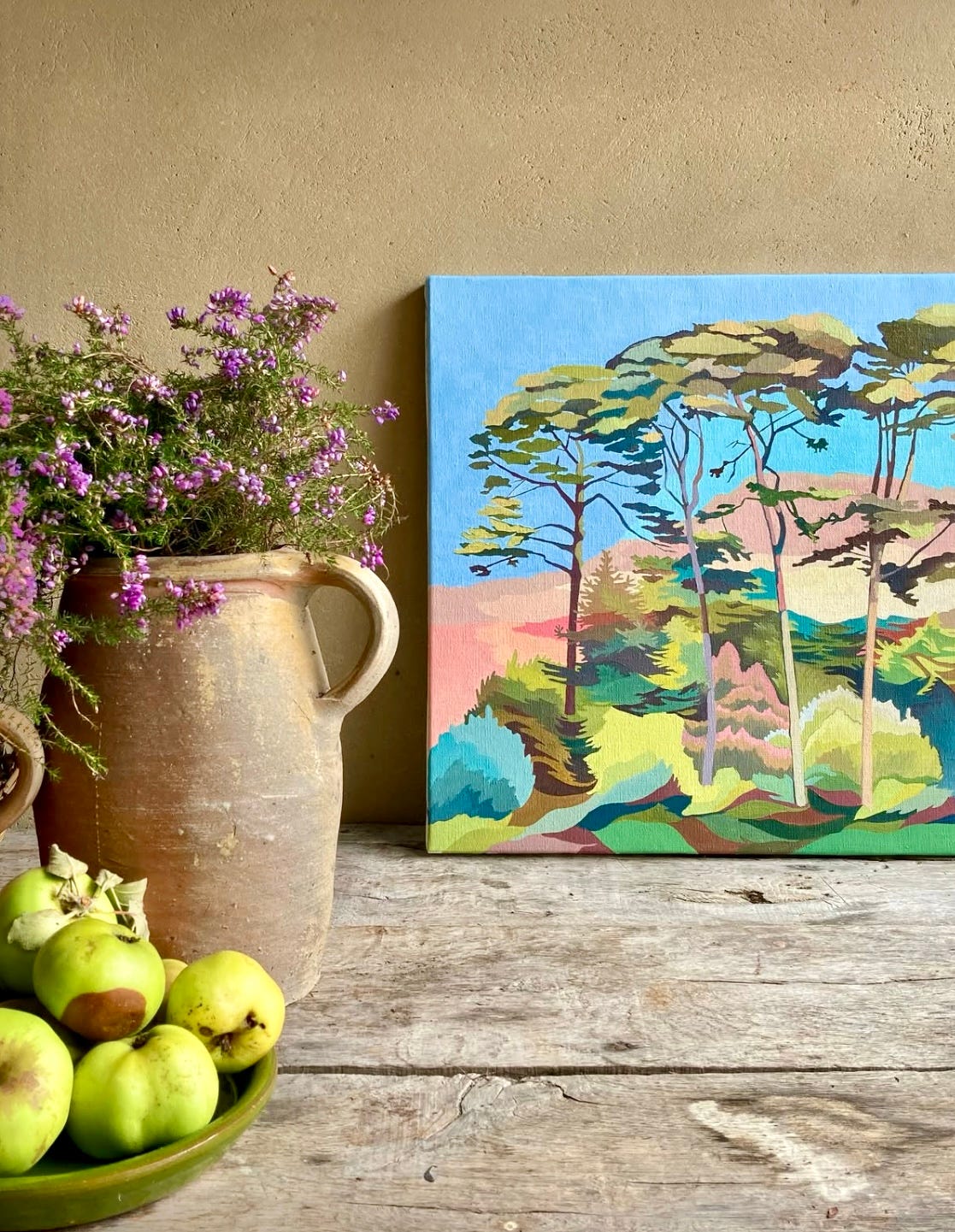
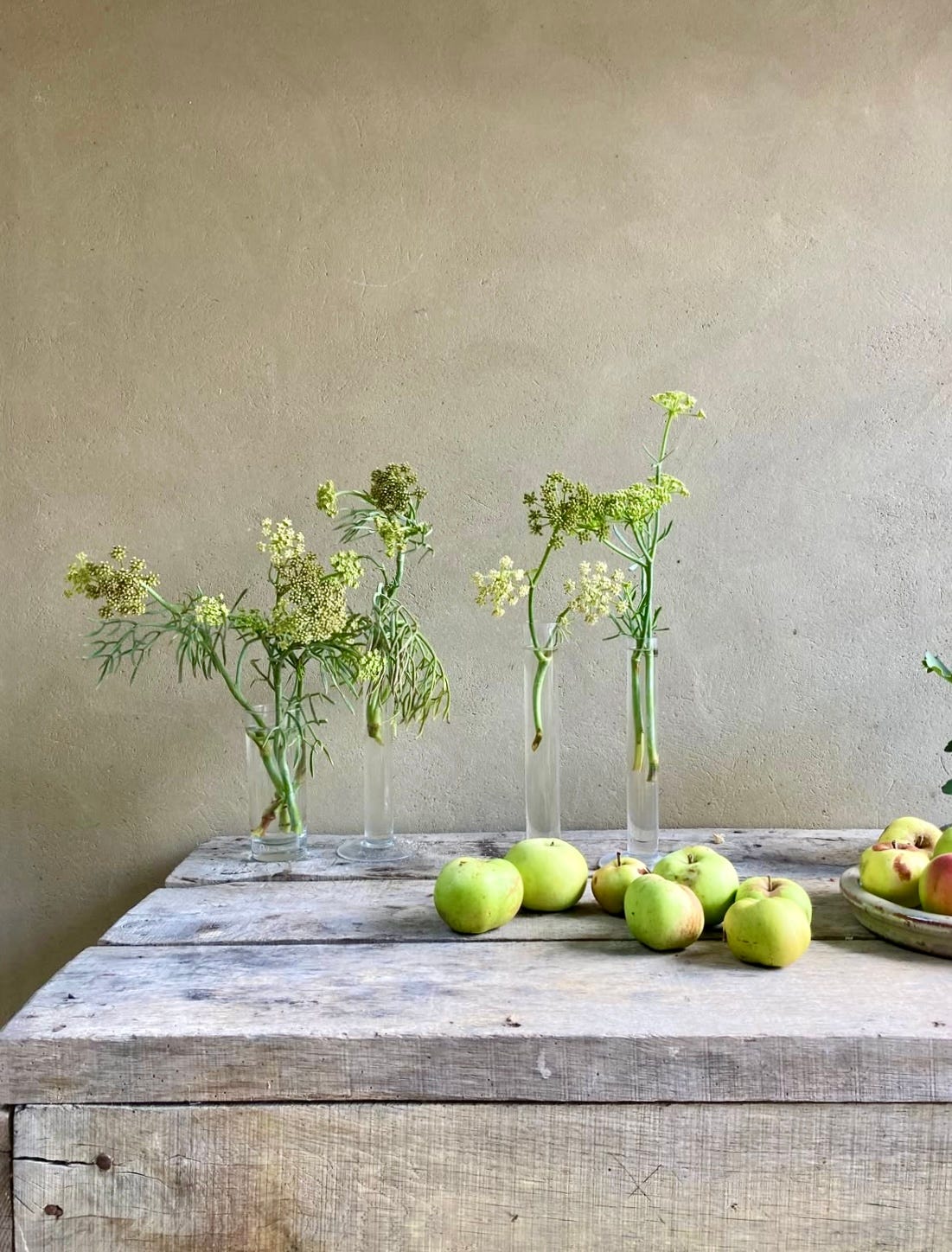
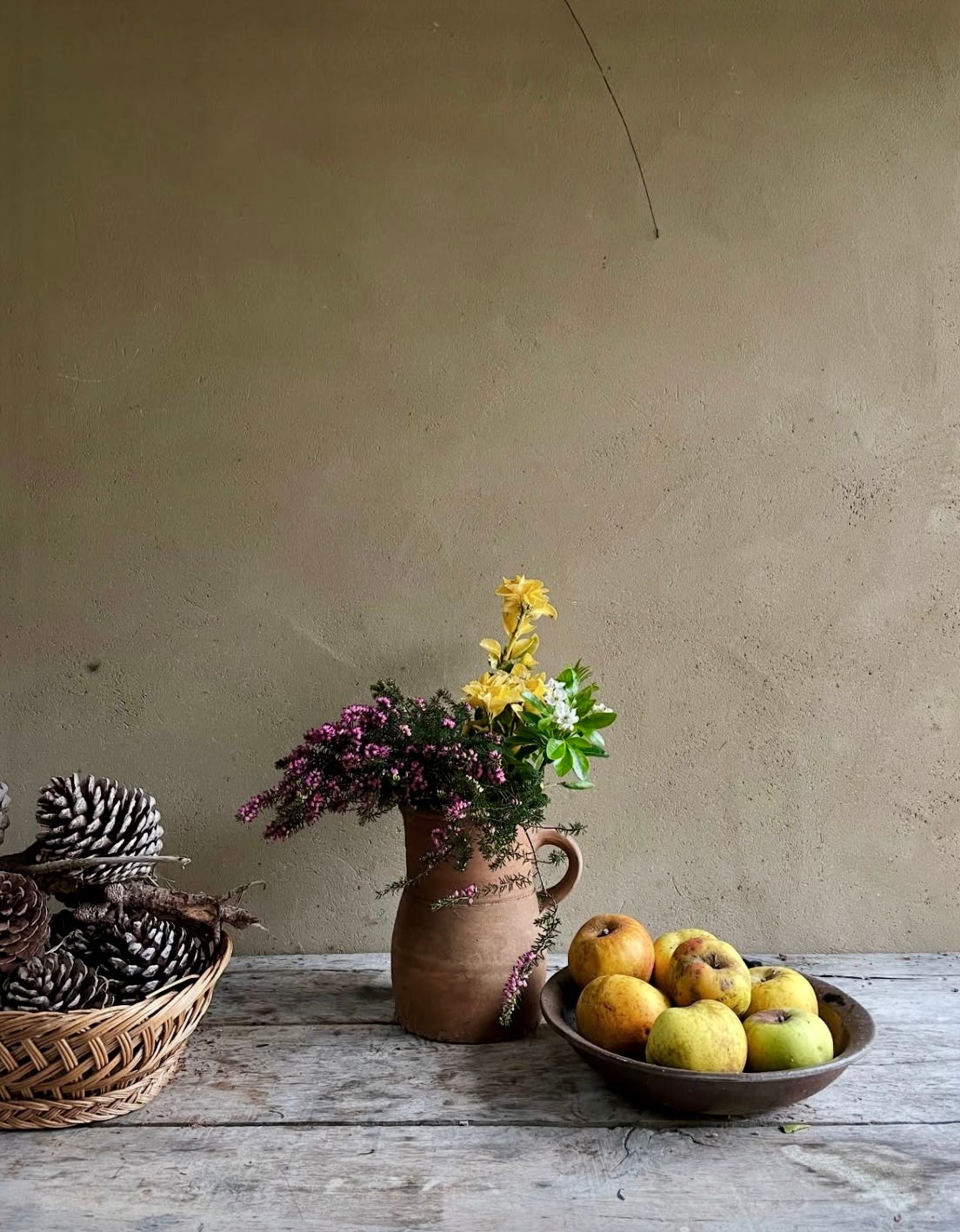
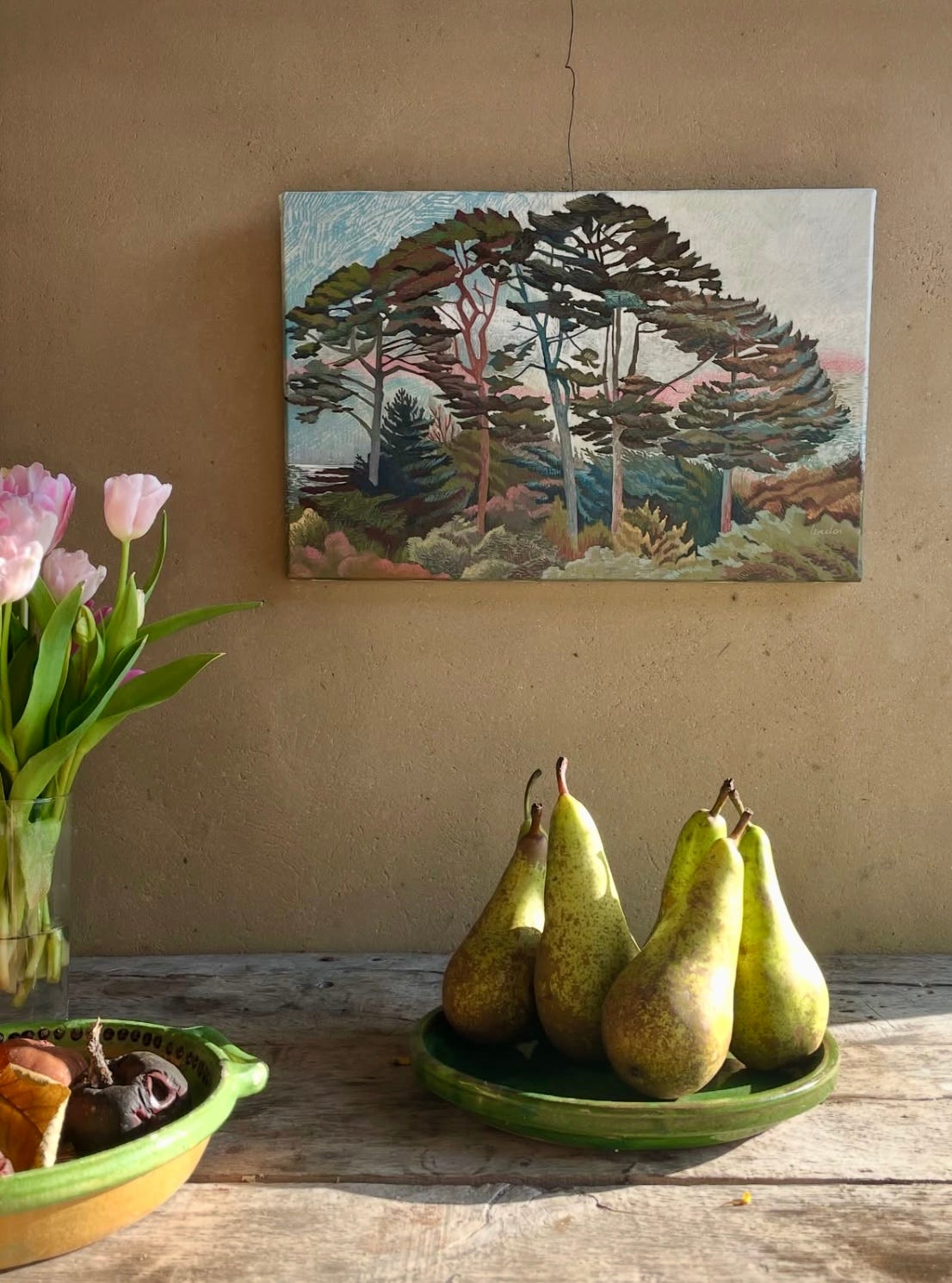
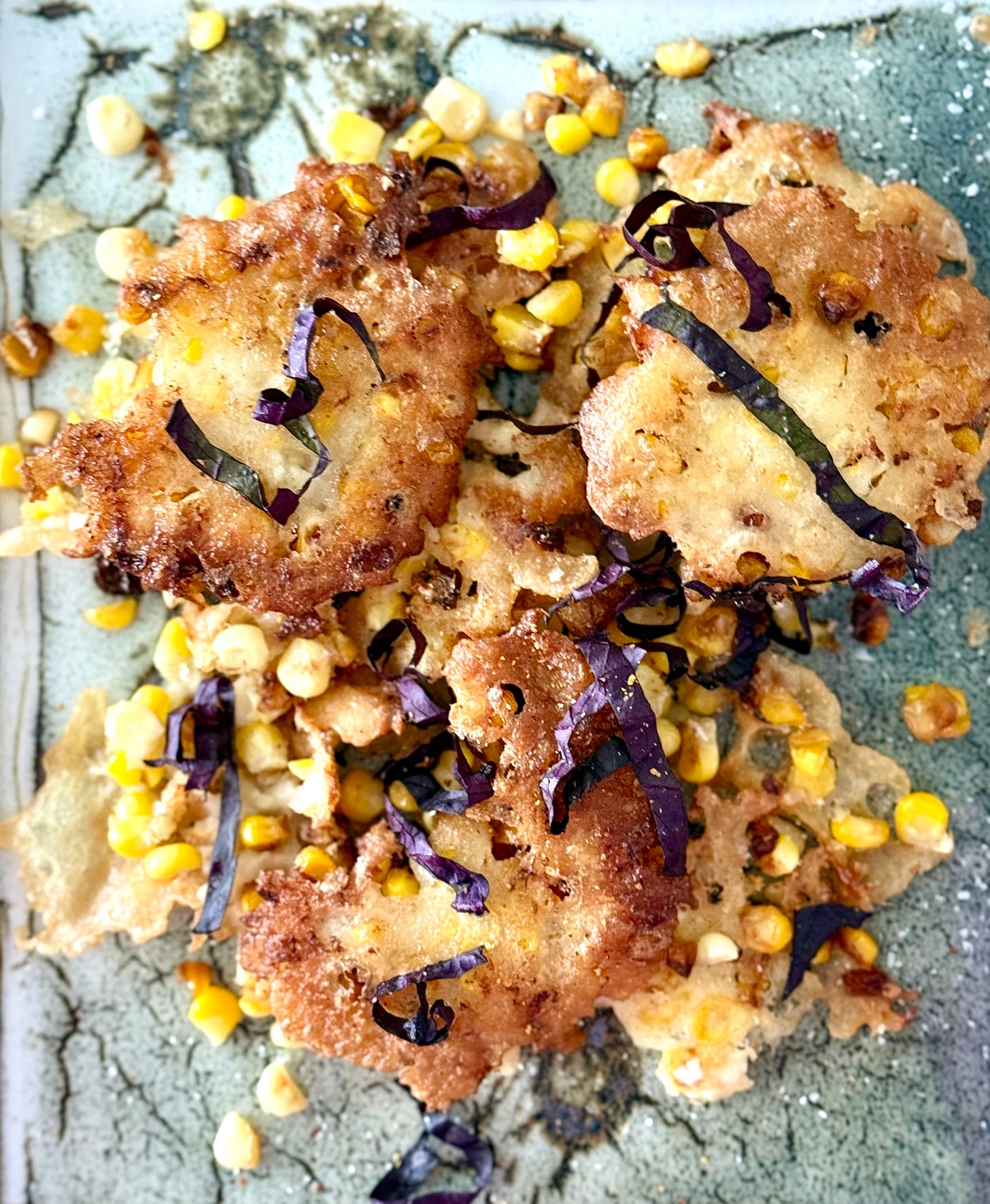
Thank you for this beautiful, calming post. I really did slow down to look at those beautiful images. I totally needed it this morning!
And those fritters look amazing!
Oh my gosh, Elizabeth. Your descriptive writing is so dreamy. I love this idea and the way you presented it. The photo of you and your sisters is precious. Love to know you were the little rebellious one!